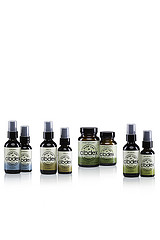The vortex tube has been called with various names such as Ranque Vortex Tube, Hilsch Tube, Ranque-Hilsch Tube; based from two pioneering physicists who initiated the invention and development of the device. This simple yet multi-purpose mechanical device has also been referred to as Maxwell’s Demon, derived from James Clerk Maxwell, an eighteenth century Scottish physicist who theorized the possibility of creating a vortex force within a mechanical device.
When George H. Ranque discovered the device in early 1930’s he immediately decided to market the device, but failed. Ranque’s creation and further niche business on vortex tubes did not succeed. It was Rudolph Hilsch who made new developments on the device. In 1945, Hilsch recreated and marketed the tube, along with a scientific journal which was widely-read by the public and prospective clients. Throughout the years more and more improvements were applied to vortex tubes. It was tested on different channels such as water, steam, propane gas and natural gas. Moreover, vortex tubes were also proven to be effective device for separating gas compounds such as oxygen and nitrogen and carbon dioxide and helium.
A vortex tube is comprised of a nozzle, diaphragm, chamber, hot and cold tubes and a cone-shaped nozzle at the opening of the hot tube. The size of this apparatus varies depending in the application or operation where it will be used. The nozzle design of the tube determines the velocity, mass flow, and inlet losses. Chamber is a part of the nozzle where the pressurized gas will be injected tangentially. The diaphragm is situated beside the nozzle and at the edge of the cold tube.
If air is supplied to the mechanical device, the air enters through the nozzle and turns at 90 degrees angle and swirls past through the chamber and up to the cone-shape valve. A parcel of the gas escapes. This is the hot air stream. A parcel of the gas is blocked by the valve and heads back to the opposite direction with a lower pressure. The air stream escapes the opposite opening of the vortex tube, and becomes the cold stream.
The temperature of vortex tubes on both openings is changeable through a control valve attached to the hot air stream tube. The lowest temperature of the cold end is at -50 degrees Fahrenheit and the highest temperature at the hot end is up to 260 degrees Fahrenheit. A vortex tube created for commercial used can produce refrigeration of 6,000 BTU.
If you are looking for more information about Vortex Tubes and Air Knives, come and visit at NexFlowAir.com.

